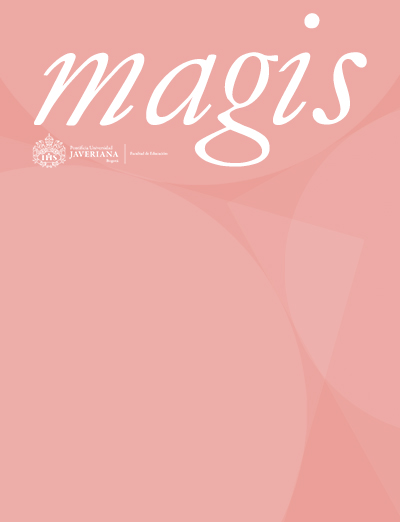Abstract
Educational theatre has long been considered an attractive learning and entertainment tool. Integrating robotics into educational theatre can enhance its aesthetic appeal and creative process. However, implementing high-quality Educational Robotic Theatre Plays (ERTP) in educational contexts brings several challenges, including limited robot programming skills of teachers and students, lack of programming interfaces to create robotic plays, high costs associated with robots, and absence of platforms capable of conceiving expressive robot actors. This paper aims to contribute to the study of educational robotic theatre by introducing a methodology that simplifies the development, staging, and performance of high-quality robotic plays. To accomplish this objective, a systematization of experiences (SE) method was applied, describing the creative process, the principal lessons learned, and the challenges encountered. The findings demonstrated the potential of interdisciplinary collaboration in producing high-quality artistic works for ERTP, while highlighting the need to address the challenges from technical, educational, and aesthetic perspectives.
Atkinson, D. (2002). Art in education: Identity and practice. Kluwer Academic Publishers.
Barnes, J., FakhrHosseini, M., Vasey, E., Duford, Z., & Jeon, M. (2017). Robot theatre with children for STEAM education. Proceedings of the Human Factors and Ergonomics Society Annual Meeting, 61(1), 875-879. https://doi.org/10.1177/1541931213601511
Barnes, J., FakhrHosseini, M., Vasey, E., Park, C. H., & Jeon, M. (2020). Child-Robot theatre: Engaging elementary students in informal STEAM education using robots. IEEE Pervasive Computing, 19(1), 22-31. https://doi.org/10.1109/MPRV.2019.2940181-
Boal, A. (1979/2000). Theatre of the oppressed. Pluto Press.
Bravo, F. A., & Páez, J. J. (2023). Exploring the use of multiagent systems in educational robotics activities. IEEE Transactions on Learning Technologies, 16(6), 970-982. https://doi.org/10.1109/TLT.2023.3277715
Celis-Buitrago, K. J., Pineda, N. A., & Gómez, P. M. (2020). COBOT: Teatro robótico educativo orientado a las emociones y el realismo [Degree project, Universidad Javeriana]. Repositorio Institucional Javeriano. http://hdl.handle.net/10554/52588
Csikszentmihalyi, M. (2014). The systems model of creativity. Springer.
Dong, J., Choi, K., Yu, S., Lee, Y., Kim, J., Vajir, D., Haines, C., Newbill, P., Wyatt, A., Upthegrove, T., & Jeon, M. P. (2023). A child-robot musical theatre afterschool program for promoting STEAM education: A case study and guidelines. International Journal of Human-Computer Interaction, 40, 3465-3481. https://doi.org/10.1080/10447318.2023.2189814
Dong, J., Mitchell, J. J., Yu, S., Harmon, M., Holstein, A., Shim, J. H., Choi, K., Zhu, Q., & Jeon, M. (2024, March). Promoting STEAM education and AI/robot ethics in a child-robot theatre afterschool program [Conference paper]. Companion of the 2024 ACM/IEEE international conference on human-robot interaction, Boulder, Colorado, USA. https://vtechworks.lib.vt.edu/server/api/core/bitstreams/5b4d043b-2e05-49b4-94bb-85cd593b65c1/content
Eckersall, P., Grehan, H., & Scheer, E. (2017). Robots: Asleep, awake, alone, and in love. In P. Eckersall, H. Grehan, & E. Scheer, New media dramaturgy (pp. 107-134). Palgrave Macmillan.
Flintoff, K. (2005). Drama and technology: Teacher attitudes and perceptions. Edith Cowan University.
Guimarães, H., Fonseca, C., Gonzalez, C., & Pinto-Correia, T. (2017). Reflecting on collaborative research into the sustainability of Mediterranean agriculture: A case study using a systematization of experiences approach. Journal of Research Practice, 13(1). https://www.researchgate.net/journal/Journal-of-Research-Practice-1712-851X?_tp=eyJjb250ZXh0Ijp7ImZpcnN0UGFnZSI6InB1YmxpY2F0aW9uIiwicGFnZSI6InB1YmxpY2F0aW9uIn19
Hakkarainen, P. & Vapalahti, K. (2011). Meaningful learning through video-supported forum-theatre. The International Journal of Teaching and Learning in Higher Education, 23, 314-328. https://www.isetl.org/ijtlhe/pdf/IJTLHE1047.pdf
Horáková, J. (2011). Looking backward at the robot. In D. Obdržálek & A. Gottscheber (Eds.), Research and Education in Robotics–EUROBOT 2011, Communications in Computer and Information Science, 161. Springer. https://doi.org/10.1007/978-3-642-21975-7_1
Jara-Holiday, O. (2018). La sistematización de experiencias: Práctica y teoría para otros mundos posibles. Centro Internacional de Educación y Desarrollo Humano-CINDE. https://repository.cinde.org.co/bitstream/handle/20.500.11907/2121/Libro%20sistematizacio%cc%81n%20Cinde-Web.pdf?sequence=1&isAllowed=y
Ko, S., Swaim, H., Sanghavi, H., Dong, J., Nadri, C., & Jeon, M. (2020, April 1). Robot-Theatre programs for different age groups to promote STEAM education and robotics research [Conference paper]. HRI ’20: Companion of the 2020 ACM/IEEE international conference on human-robot interaction, New York, NY, USA.
Mitchell, J. J., Dong, J., Yu, S., Harmon, M., Holstein, A., Shim, J. H., Choi, K., Zhu, Q., & M. Jeon. (2024, March 11-15). Bridging the gap: Early education on robot and AI ethics through the robot theatre platform in an informal learning environment [Conference paper]. Companion of the 2024 ACM/IEEE international conference on human-robot interaction, Boulder, CO, USA. https://dl.acm.org/doi/pdf/10.1145/3610978.3640581
Nijholt, A. (2018, July). Robotic stand-up comedy: State-of-the-art [Conference paper]. Distributed, ambient and pervasive interactions: Understanding humans 6th international conference, Las Vegas, NV, USA. http://dx.doi.org/10.1007/978-3-319-91125-0_32
Páez Rodríguez, J. J. (2019). Interacción humano-robot: Consideraciones de implementación en ambientes escolares (Human-robot interaction: Implementation considerations in school environments). Noria Investigación Educativa, 1(3).
Sanoubari, E., Johnson, A., Muñoz, J. E., Houston, A., & Dautenhahn, K. (2023). Using robot-mediated applied drama to foster anti-bullying peer support. In R. Hakli, P. Mäkelä, & J. Seibt (Eds.), Social robots in social institutions (pp. 194-203). IOS Press. http://dx.doi.org/10.3233/FAIA220618
Sawyer, R. K. (2014). Group creativity: Music, theatre, collaboration. Psychology Press.
Sone, Y. (2017). Japanese robot culture. Palgrave Macmillan.
Sovhyra, T. (2021). Robotic theatre: Comparative analysis of human and mechanized activities in the creative process. Creativity Studies, 14(2), 295-306. https://doi.org/10.3846/cs.2021.13545
Spolin, V. (1963). Improvisation for the theatre. Northwestern University Press.
Szecsei, D. (2019, February 27). Theatrical performances using robots as actors [Conference paper]. 2019 Research on equity and sustained participation in engineering, computing, and technology (RESPECT), Minneapolis, MN, USA. https://doi.org/10.1109/RESPECT46404.2019.8985868
Thambu, N., Shanmugavelu, G., & Mahayudin, Z. (2020). The use of forum theatre as creative pedagogy in teaching and learning of moral education in secondary schools in Malaysia. EPRA International Journal of Multidisciplinary Research (IJMR), 6(8), 315-324. https://doi.org/10.36713/epra4961
Thamdrup, C., Smith, C., Dieckmann, P., Belsi, A., & Nestel, D. (2024). Using Forum Theatre techniques in teaching and learning about professionalism and communication in healthcare. International Journal of Healthcare Simulation. https://doi.org/10.54531/lfss8468
Tobar, J. B., Prócel, A., Loza, D., Caicedo, E., & Bacca, B. (2021). Autism Robotic Theater: a technological tool to contribute to the socialinteraction of children diagnosed with autism spectrum disorder. Periodicals of Engineering and Natural Sciences (PEN), 9(3), 548-567.

This work is licensed under a Creative Commons Attribution 4.0 International License.
Copyright (c) 2025 Rocío Lopez-Ordosgoitia, Flor Bravo-Sánchez, José Convers-Elías, Victor Alfonso Quesada-Aguilar, Mónica Brijaldo-Rodríguez, Enrique González



